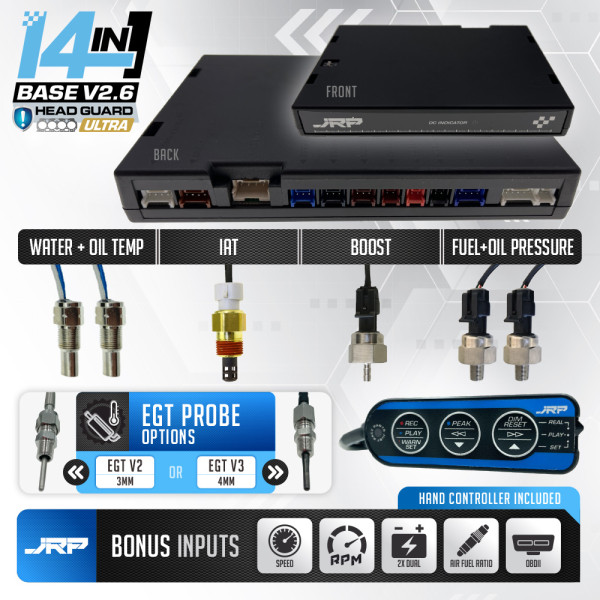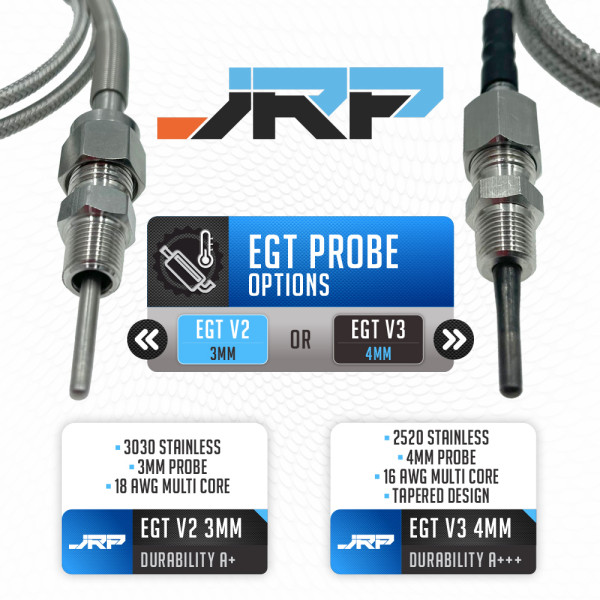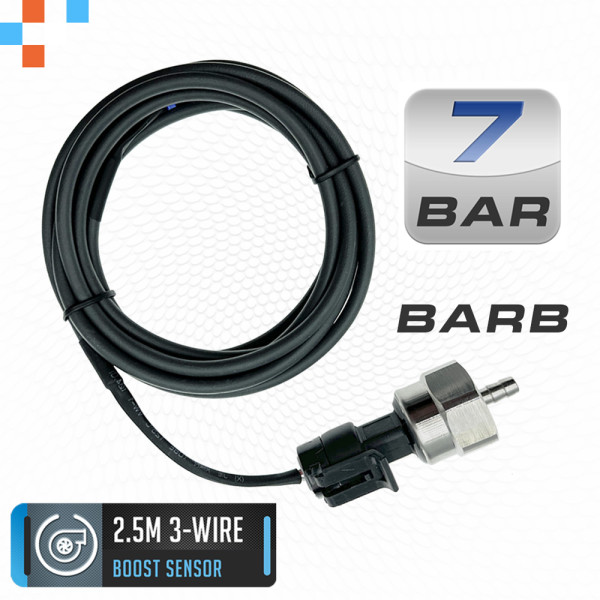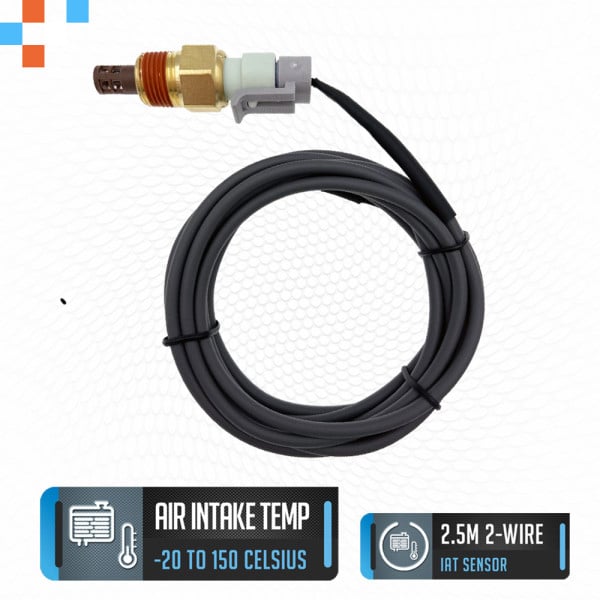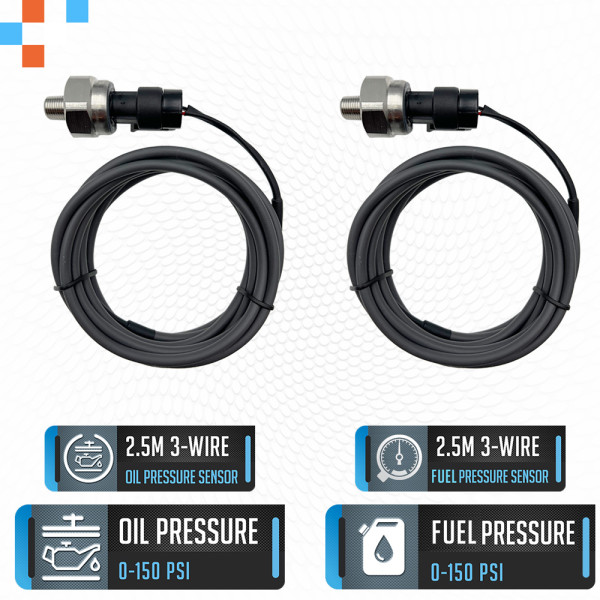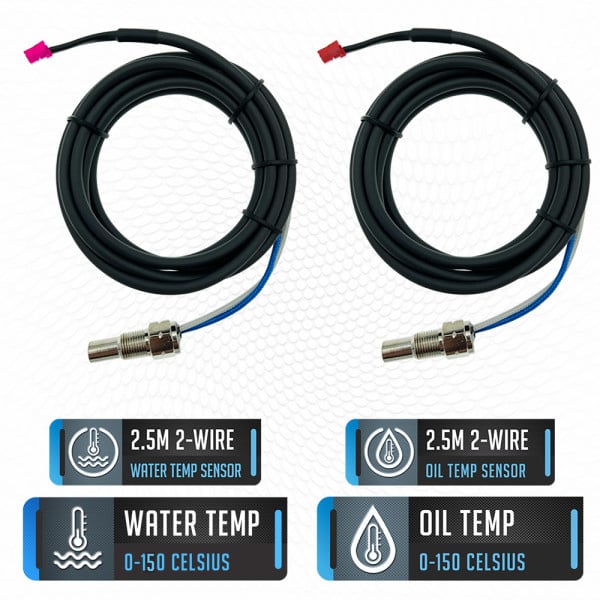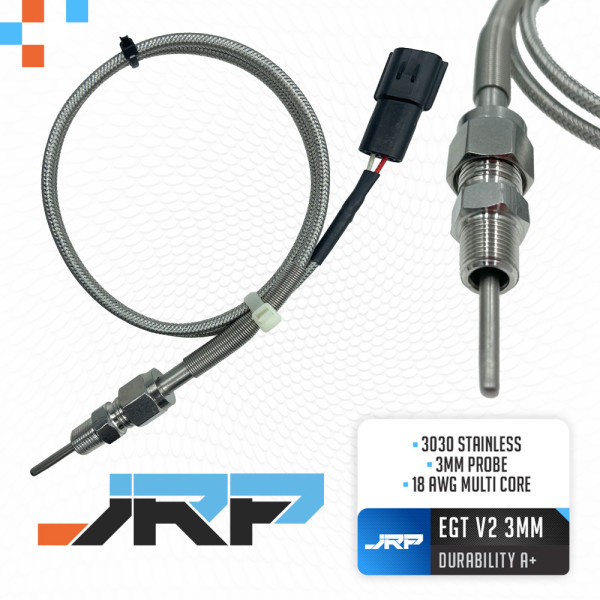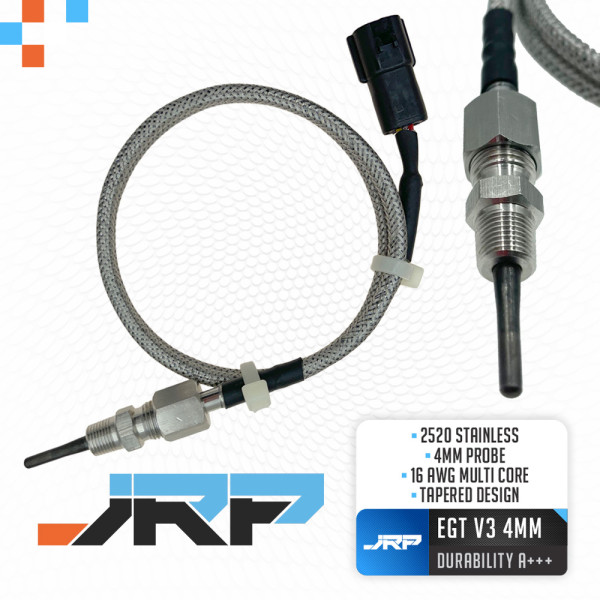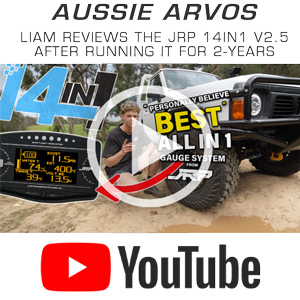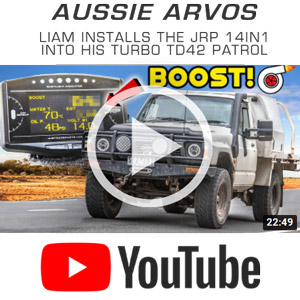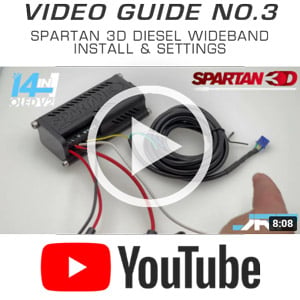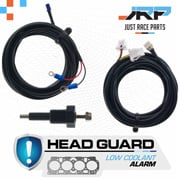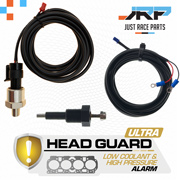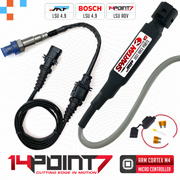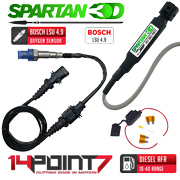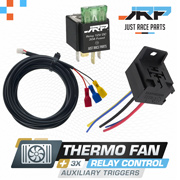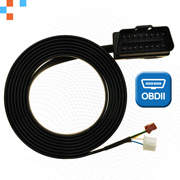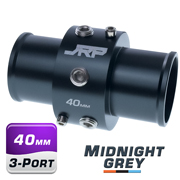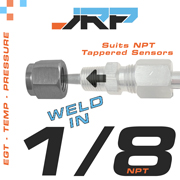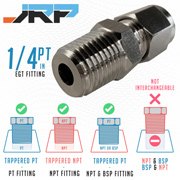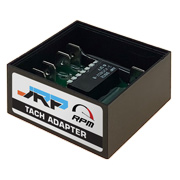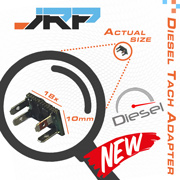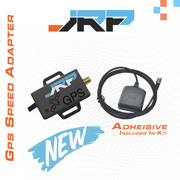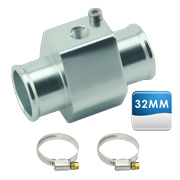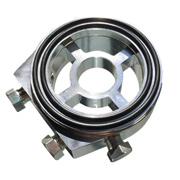| File | Size | |
|---|---|---|
| JRP-14in1-Multi-Gauge-v2-5-v2-6-Primary-Manual-08-2024.pdf | 9.52MB | Manuals |
| JRP-14in1-v2-6-Secondary-Manual-Important-08-2024.pdf | 12.35MB | Manuals |
We are extremely proud to introduce the JRP v2.6 Multi Gauge Base Pack, which officially released in Aug 2024 and is our latest revision. These base packs are the heart and soul of our 14in1 multi gauge systems, this is a pack you need to order along with the 14in1 v2.6 screen to make a functioning system, and if required you are also able to order some of our addon packs such as Head Guard, Head Guard Ultra, Spartan Wideband Kits or our Thermo fan controller addon if these appeal to your project. This base pack provides the control unit which is the brain of the system and is what our screens & sensors connect to and comes with a range of sensors as standard inside the kits. We list below exactly what comes in this kit, scroll down to see the “What’s In The Box” list to know what’s included as standard.
With the release of the v2.6, we have managed to add some powerful new features, some included as standard, and some that are addon packs you can purchase if you are looking for further functionality & sensors than the standard base pack provides. We list the “Optional Addon” packs below which you can then visit their pages to learn more about them.
EGT sensors are optional and don’t come with the pack as standard, as some customers using Petrol do not require them, so you will see a product options checkbox next to the add to cart button, where you can choose to add either no EGT, or our v2 EGT, or our v3 EGT sensor to this base pack.
With the release of the v2.6 systems, we have stepped up the game creating three new addon packs, the first being Head Guard, which will add a Low Coolant sensor & alarm to the systems, the next we call Head Guard Ultra, and this also adds a Low Coolant sensor & alarm to the systems, but it will also add a Water Pressure sensor along with a high pressure alarm. The third is what we call auxiliary triggering, essentially it adds thermo fan control to the units, with being able to control 3x relays simultaneously using various temps read by the gauge. And of course, the good old Spartan wideband kits are an option as well, for those who would like to add air fuel ratio readings to their gauges, be it for either petrol or diesel.
And for the customers who are using Diesel, and planned on using one of our Spartan 3D Diesel wideband controller kits with these systems, we have now added a Diesel AFR rich warning to the systems, we talk about this warning system and what it can provide in relation to engine protection on our 14in1 v2.6 screen page, if you would like to know more about this latest warning added to these systems, take a read of the 14in1 screen page for more information on the Diesel AFR rich warning.
We feel with the latest release, we have added a bunch of new functionally and ability to connect sensors that not many if any other gauge companies have managed to put into a single system. We are extremely proud of this latest revision, because in a lot of cases, this will be the only and last gauge setup customers may need to completely protect their pride and joy. We know there is a ton of information on this page, if customers ever have any questions about what they might need for their vehicle, or any questions at all, please feel free to reach out to our experienced tech team, they will be only too happy to help.
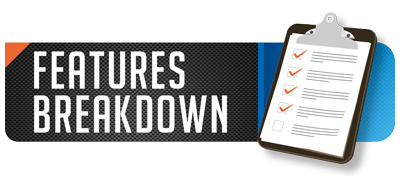
High Quality Control Unit, ST Processor
JST Connectors On All Ports
7-Sensor Inputs Total
4-Aux Inputs, Speed, RPM, Volts #2 & Wideband
Super Fast Serial Communication
50ms Response Rate On All Inputs
Ability To Data Log & Playback On Screen
Petrol & Diesel Wideband Input Support
3-Wire 0-5v High Quality Pressure Sensors
2-Wire High Quality Temp Sensors
Quality Cables & Connectors
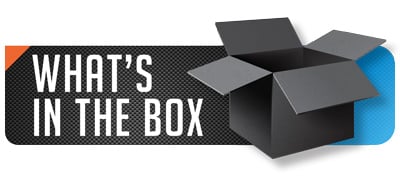
Base Control Unit
7-Bar 99-PSI Barb Boost Sensor
Water Temp Sensor 1/8 PT
Oil / Trans Temp Sensor 1/8 PT
Fuel Pressure Sensor 1/8 PT
Oil Pressure Sensor 1/8 PT
Air Intake Temp Sensor 3/8 NPT
Speed & RPM Input Cable
Volts #2 & Wideband Input Cable
Hand Controller & DC Power Cable
(Click The Specification Tab For Full List)
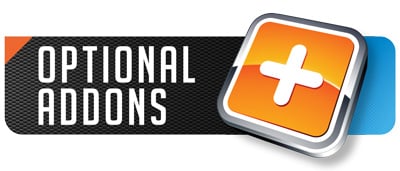
Below are links to our pages of optional addons you can use with our 14in1 systems, everything from our Head Guard which adds a low coolant sensor & alarm, to Head Guard Ultra, which adds low coolant & water pressure sensors & alarms, to our range of wideband kits which will enable air fuel ratios to display, and we even have a thermo fan triggering kit with relay. Any questions about the addons please reach out to our tech team and they will be happy to assist. Note EGT sensors are added from this page directly, take note of the options box near the add to cart button.
![]()
Two EGT Sensor Options
We here at JRP have a strong focus on the Diesel 4x4 customer base, this started before the release of our multi gauge v2 systems in 2018, we made it a priority to offer the best possible EGT sensors for this market without asking customers to pay an arm and a leg for our systems. For the release of the v2 multi gauges we developed what we call the JRP EGT v2 sensors, we go into detail below about these amazing sensors which are the first of two EGT sensor options for these kits. Something to note is some people know EGT sensors as Pyrometer sensors, they are actually the same thing, and Pyro is used more in the USA market than here in Australia & New Zealand. Along the way we wanted to take things even further, while our EGT v2 sensors are still an amazing little sensor, we knew with a little more money invested in the development and materials we could offer people an even better EGT sensor for just a little extra money. Rather than just drop our v2 sensors and only offer the v3 sensors with these kits, which would increase the base cost and maybe put the kits out of reach for some customers, we decided to keep offering these kits with the EGT v2, but also offer customers the option to upgrade to the JRP EGT v3 if the so wished. Because the v2 sensors still are a great sensor, we feel this was the best way to go about things. So below we give a little more info on the difference between the two sensors, and you can make your choice when adding the base pack to cart which EGT sensor you would like to purchase with your base pack. We also have a couple of photos listed up which shows a comparison between the two sensors if you would like to visually see the differences. Of course, not everyone will require an EGT sensor, which is why we have the option to order this base pack without EGT as well. But if you run a turbo diesel, or a high performance naturally aspirated petrol vehicle, EGT is pretty much a must and we have two great options for you to choose from.
 V2 EGT - Pyro Sensor
V2 EGT - Pyro Sensor
As we mentioned above, these are our JRP EGT sensor v2 that we developed before the launch of the v2 multi gauge back in 2018, they are a rock solid little sensor that will serve most Diesel guys and are tried and tested with great success over the years. The JRP EGT v2 sensor is constructed of high quality 3030 stainless steel with a probe thickness of 3mm, the induction points inside the probes are shielded to make sure no external grounds can be picked up by the sensors to interfere with readings, they use multi-core wire as opposed to single core, a lot of EGT products in the price range of our systems use single core wires, single core wires are inferior with handling vibration which can be one of the leading causes of EGT sensor failure, so again our v2 EGT sensors have this covered by using quality multi core wire all the way. They also have Deutsch plug on the end of the sensor for easy access, and all wires are heat shielded. If you don’t have a history of hammering EGT sensors, these standard v2 sensors are still a terrific choice. For Diesel guys that give EGT a hammering, wanting to install pre-turbo, or are looking for the best EGT sensor possible to be running on our system, we encourage might want to consider our v3 sensor upgrade which really isn’t that much more money. If you run a very lean NA performance petrol car which traditionally run very high EGT’s, you also may want to consider our v3 sensors.
 V3 EGT - Pyro Sensor
V3 EGT - Pyro Sensor
Over the years of selling products that use EGT sensors, we have learnt a few things. With thousands of vehicles now running our EGT sensors, we have gathered a lot of real world feedback and data on what makes a sensor great, and data on what makes them not so great. With that knowledge in hand, we set out to produce an improved version of our v2 EGT sensors, and we have managed to do just that, we are proud to offer these improved sensors as an upgrade option which we call the JRP EGT v3 sensor. These sensors have all the main fundamentals of the v2 EGT sensors, but have been upgraded in area’s we think are of importance. For starters the gauge wire used on these sensors is a couple of levels up to better handle excessive vibration, like the v2 sensors we have made sure to use high quality multi core wire and paid extra attention to perfect crimping. The induction points inside the probe itself are shielded to make sure there can never be any issues with external grounds making their way into the sensors to cause incorrect readings. The probe body itself is made from 2520 stainless steel, the decision to use 2520 over 3030 was one our engineer decided on after reviewing a few factors, the actual thickness of the probe shaft itself has been increased to 4mm, as well as the actual thickness of the metal protecting the induction point inside and will offer better durability and longevity. The probe shape and design is also improved, tapering down from the top to the tip. The response rates on the v3’s is also an improvement over our older v2’s, not that our old v2’s was sluggish by any means, but as we mentioned above we were really shooting for an EGT sensor a couple of steps up from our v2, but again without them costing a fortune like some other high end brands. Reports from our workshop & dyno customers who beta tested the v3 probes for us was that there was a noticeable difference in response rates, the v3’s are much snappier with reporting quick changes in exhaust gas temps with large changes in throttle or on deacceleration.
So with all of that information in hand, no matter which way you go here you have the choice of two great EGT sensors, if you are on a budget we have you covered, or if you have a history of giving EGT sensors a hammering and want the fastest most accurate responding sensor we could muster up with our years of experience, you have the option to upgrade to the JRP EGT v3. We really recommend the v3 sensors for any customer that is running a NA performance car that see’s 800-950c temps a lot of the time, and for Diesel guys that have a history of giving sensors a hard time, wanting the best possible response rates, or wanting to install pre-turbo. Considering the cost to upgrade really isn’t that much more, even if you don’t have a history of hamming EGT sensors on your Diesel rig, if your budget permits, of course we would lean towards saying grab the v3 for the best setup.
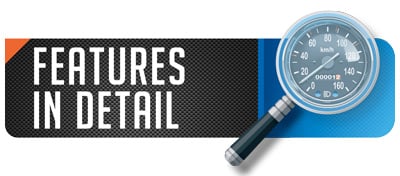
 Daisy Chain Multiple 14in1 Displays
Daisy Chain Multiple 14in1 Displays
Another great feature of our JRP multi gauge systems is the ability to daisy chain more than one of our 14in1 displays to the control unit. So it’s possible to have right up to 7 of the gauges connected to each other at once. While 7 gauges would be complete overkill, we have found some customers have definitely made use of connecting 2 or 3 gauges up to these systems at once as they are using more than 6 readouts at once and would like to see more than one gauge can display.
The JRP 14in1 gauges when using all the display cells available to its maximum can display 6 readouts from your inputs or sensors, but it’s also possible to make the first two readouts take up 2-cells and with doing that will give you a larger readout on the display for viewing purposes, but when you do this the amount of readouts on the display goes from 6 to 4. So this is where running multiple 14in1 displays comes in. Some people will have more than 6 readouts they would like to see, so while using the smallest readout display and running two gauges it will allow for a total of 12 readouts to display across two gauges. Or, if the customer would like to use the larger readouts, running two gauges means they can have a total of 8 readouts displayed across the two gauges, and 4 of those readouts will be much larger than normal. Some of our product photos on the 14in1 displays page show the larger readouts that we mention in this section if you would like to see some examples.
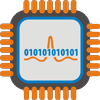 Analog to Digital Interface Control Box
Analog to Digital Interface Control Box
The heart of this system is the control box that all the sensors connect to. This box is a proper analog to digital control box, the analog sensors feed into it which it then converts to a digital signal. This digital signal is sent back to the gauge in serial format. This has a number of advantages over a straight analog pass-through system, one being that sensor data sent from the control box to the gauge will not be susceptible to voltage drop or interference. Another is the cable that has to run from the control box isn’t made up of 10 or more wires, it’s a much smaller cable making it easier to pass though tight spaces.
 High Quality Sensors
High Quality Sensors
The sensors that ship with this multi gauge systems are high quality but without the high price tag that comes with big brand name gauge systems. We have run them back to back with brand name gauges as reference gauges and all of them are well within acceptable accuracy variance of 1%. We understand that having sensors read correctly is hugely important, their durability and accuracy are the heart and soul of the system. But it gets to a point with sensors where you are paying extra for an additional 0.1% accuracy, in reality you only need a sensor to accurate to within 1% of the actual source, anything more than that just costs more for no real world benefit to 99% of us out there.
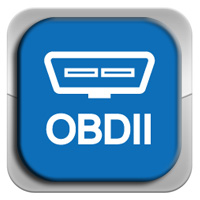 Optional OBD2 / OBDii Installation Supported
Optional OBD2 / OBDii Installation Supported
With the release of the latest v2.5 hardware in Jan 2021 of our very popular 14in1 multi gauge systems, came the added support for OBDii / OBD2 installation. What this means is it’s now possible to connect our 14in1 systems up to the OBD2 ports in vehicles that are equipped with an OBDII port to simplify the install by sourcing power for the units from these ports, and in most cases also source readouts like Speed & RPM without the need to hardwire those in, and also any other readings the vehicle is outputting from the OBDII port that our gauges support the readouts for.
To make use of the OBDII support for these systems, you will require one of these OBDII cables to run from the multi gauge control unit to the OBD2 port on your vehicle. Before ordering this cable you should make sure that your vehicle is equipped with an OBDII port, these started showing up in mass produced vehicles from around 2001 and are found on most major vehicle brands like Toyota, Nissan, Honda, Audi, BWM for example. A quick google search of your vehicles make, model & year along with OBD2 should yield results if your vehicle is able to make use of this cable in the install process for the multi gauge systems. If in doubt, feel free to email us before making your order and we will be happy to help.
 Petrol Wideband Input Supported
Petrol Wideband Input Supported
The control unit included in this package supports wideband inputs in the form of UEGO 0-5v 10 to 20 AFR or 0.68 to 1.36 Lambda for petrol vehicles out of the box, so if you would like to also have Air Fuel Ratio or Lambda readings come up on the 14in1 gauge you can. We sell 14point7 Spartan 3 Lite wideband kits which can be connected directly to the control unit which will give you an Air / Fuel Ratio or Lambda readout on the 14in1 gauge once both are installed together. Also if you are already running say an innovate wideband, they have the option to configure the analog output, so you can set it to 0-5v 10-20 AFR or 0.68 to 1.36 Lambda range for petrol vehicles. If you are not ordering one of our 14point7 Spartan 3 Lite widebands to use along with this kit, please email us first if you are using another brand wideband kit to make sure it is compatible with our control unit.
Below we have a link you can click on which will take you to our Spartan 3 Lite compatible wideband kit, this would be the wideband kit to order if you are running unleaded, e85, methanol fuels and are looking at getting Air Fuel Ratio or Lambda to display on the 14in1 screen. They are one of the best wideband kits available in the world today and at a terrific price.
Click Here
For Petrol Compatible
Spartan 3 Lite Wideband
 Diesel Wideband Input Supported
Diesel Wideband Input Supported
Something we have been working on with 14point7 for some time now are widebands for Diesels, we have a huge following with the diesel crowd and many of the improvements and updates to our JRP multi gauge systems over the years has been for our beloved diesel customers. The Spartan 3D Lite Diesel wideband controller kits are now on our website for sale, pop over to their page to have a read about what makes these such a great Diesel wideband solution. The Spartan 3D Lite Diesel wideband is the product you would order along with this base pack if wanting to monitor Diesel air fuel ratios on the 14in1 gauges screen, you simply install the Spartan 3D controller and 02 sensor and then run it’s wideband output into the control unit that comes in this base back, after doing this you will now have a Diesel air fuel ratio range of 10 to 40 display on the 14in1 gauges screen.
Make sure not to confuse the Spartan 3D Lite diesel wideband with the standard Spartan 3 Lite, as the Spartan 3 Lite is meant for petrol applications and not Diesel, so once again the wideband you would grab if wanting the 10 to 40 AFR range for Diesels would be the Spartan 3D Lite diesel. We have linked below to the correct page so you can check them out.
Click Here
For Diesel Compatible
Spartan 3D Lite Diesel Wideband
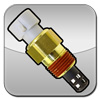 IAT - Air Intake Temperature
IAT - Air Intake Temperature
An additional sensor has been added to the v2 of the base pack and control unit and this has been an IAT sensor, this stands for Air Intake Temperature sensor. These sensors will allow you to monitor the air intake temps at the manifold on turbo and supercharged cars. These sensors will read from 0c to 150c intake temps, they take the form of the IAT sensors found installed with most aftermarket ECU setups and have a 3/8” NPT thread, very similar to the GM style IAT sensors as is their resistance curves. Monitoring IAT’s can be especially important on turbo and supercharged cars, as if air intake temps get too hot while timing is advanced under boost conditions, this can lead to possible detonation. So the kits having an IAT sensor included allows you to monitor air intake temps on these vehicles.
 Transmission Temp Sensor & Readout
Transmission Temp Sensor & Readout
If you don’t plan on using Oil Temp with your units, which is a sensor supplied as standard in this kit, you can simply change a setting on the 14in1 screen itself that will change the Oil Temp readout to display Transmission temp, and there is no need to buy another sensor. The only reason to buy our separate transmission temp sensor on offer is, if you plan on running Water Temp + Oil Temp, and you are happy to lose IAT to have the combination of Water Temp + Oil Temp + Trans Temp. We have done our best to make Trans Temp a selectable or useable option on the systems.
For those customers that really want both Water Temp & Oil Temp but they also want transmission temp as well, we do have a solution, but there is a catch. These kits come with an IAT (air intake temp) sensor as standard, but what we have done is made this port on the control unit multipurpose, so it’s possible to connect either an IAT sensor to this port, or a Transmission temp sensor as well. So, in these cases, we do offer a trans temp sensor which can be bought at a reasonable price to make sure you have the combination of readouts that you will want.
So, in short, if you want Water Temp + Trans Temp on the systems, you don’t need to buy adiation sensors, but if you wanted Water Temp + Oil Temp + Trans Temp, you will need to buy our additional Trans Temp sensor, and forgo using the IAT sensor. We have run out of ports on the control unit and are not able to expand these systems any further from an input point of view on the control unit, so we did our best here to give customers viable options.
Diesel guys for example, they will be really happy with this, because not many Diesel guys use Oil Temp, so if you have a turbo TD42, 1HDT or any of the other host of turbo charged Diesel engines out there, these kits as standard offer the ability to run Water Temp + Trans Temp + IAT off the supplied sensors in this kit, as long as you don’t want Oil Temp. Any questions in regard to this, please reach out to our helpful techs and they will be happy to assist you.
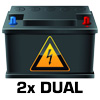 Dual Volts Inputs
Dual Volts Inputs
Another additional input found on the v2 models is a second dedicated volts input. So it is now possible for 4x4 owners to not only monitor their primary battery voltages, but you can now also run a line to your secondary / auxiliary battery’s and monitor the voltage on those as well. The 4x4 community has really taken to these gauges as well, and dual volts has been a feature request we have had for some time, so these latest version 2 of the control unit now have a secondary 8v to 36v input so you can monitor both primary and secondary batteries. Now for our performance customers, this feature can also come in handy and we talk more about that on the screens product page.
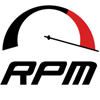 RPM & Speed inputs
RPM & Speed inputs
Now while this gauge system comes with all the sensors, there are two inputs that require you to source the signals from your vehicle as inputs into the control unit for the system to be able to display them on the 14in1 screen, these are RPM and Speed. The first and quickest way to do this if you vehicle permits this is by using our OBDii cable which is sold separately and in most cases using this cable for the install will not only give you power for the units, but can pull both Speed and RPM from the OBD2 port directly to display on the gauge. Please see our section above regarding OBDii support and have a read of our OBDii cable page to determine if you are able to use this method to obtain RPM & Speed for these units. The second method is you will need to hardwire speed and rpm into the units using the supplied cable with this kit, on most modern vehicles, their ECU will output a speed signal the system can understand and can be tapped into, but as you start going back to cars older than 1990, the ECU’s either don’t have a speed signal you can tap into (mechanical), or there is no ECU at all to be able to tap into. For most people this won’t be an issue, as speed isn’t really one of the readouts they are looking for. RPM on the other hand more people will want, as there are functions in the digital multi gauge that can make use of an RPM input, such as some of the warning setups, you have shift lights on those as well.
Again unless using the OBDii install method this will come down to the ECU, but unlike speed, RPM can be picked up on almost all cars that run fuel injection and have an ECU. Most ECU’s will have an RPM output on them, but if we are talking late 80’s early 90’s cars, the ECU might not have a dedicated RPM output, don’t fear as what can be done is tapping into the ECU’s ignition firing line running to the igniter, or the coil has fired return line from the igniter to the ECU. We are pretty well versed here in how to obtain RPM for these systems, so when it comes time to install we can offer assistance in how to obtain an RPM signal.
Now for those vehicles that do not run an ECU, also don’t fear, we do have an option for you, but it is an extra product you need to buy to get an RPM signal that the control unit can understand. If you are running an old diesel, or a carb car or pretty much anything that doesn’t have an ECU you can grab a RPM signal from, we have these special little tach adapters which allow you to pull an RPM signal from multiple sources and convert it to a 5v-12v square wave pulse signal the control box understands, be it from COP, distributors, even alternators. Click on this link to take you to its page for more information on our JRP Tach Adapter
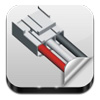 High Quality JST Style Connectors
High Quality JST Style Connectors
The v2 kits are now all built using high quality JST style connectors throughout, while most people never think quality of connectors means anything, using high quality JST style is just another way we have really polished the product. The cables slide in smoothly, the crimping and just overall build of the connectors on the control box, 10in1 gauge, sensor cables are top notch. As above most people wouldn’t even think about this side, but we have, it’s just another way to bring up the overall quality and durability of the product.
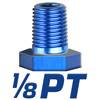 Sensors Have 1/8 PT Threads
Sensors Have 1/8 PT Threads
Something also innovative we have done here at JRP to make the installation of our sensors onto vehicles just a bit more flexible and easier on our customers is, we have adopted using the 1/8 PT threads on most of our sensors. Most people know the NPT standard for threads, and then BSP, but did you know that there has been a standard thread size made that can be installed into both NPT & BSP threads?
Almost all aftermarket gauges come with 1/8 NPT threaded sensors, as did ours for quite a while before we made this change, and while supplying 1/8 NPT sensors is pretty much the standard for aftermarket gauges, there are plenty of customers that wanted to screw sensors into available ports on their engines and they are BSP thread. This means they were not able to use these ports without adapters and a lot of people get caught out with this issue and find when coming to install the gauges, they needed to then order an adapter to use the sensors on their intended locations because the thread difference didn’t allow them to use the supplied sensors from aftermarket gauges where they originally thought they could, bummer right.
Almost all Japanese engines and fittings are 1/8 BSP thread and not 1/8 NPT like most aftermarket gauges. Our Water, Oil, Trans, Pressure sensors supplied with the 14in1 kits are now all PT thread, and what this means is, they will fit into both NPT & BSP threads at the same time. So, customers have the option of screwing some of our sensors into engines directly if they so wish, without the need for adapters. Just another thoughtful thing we here at JRP have incorporated into our range of sensors. Note, our EGT sensors are still 1/8 NPT, our IAT are 3/8 NPT, if this changes we will update this section.
This adoption of using PT threaded sensors means that customers shouldn’t get caught out when installing their sensors, if your spot is NPT or BSP, well, unlike other aftermarket gauges and sensors, this is no problem when using JRP, our sensors will fit both, pretty cool right.
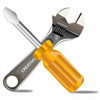 Optional Install Accessories & Sensors
Optional Install Accessories & Sensors
We have a range of accessories that can be bought alongside this kit to make installation of the sensors or system simpler and neater. For customers that are planning on using our Head Guard or Head Guard Ultra addon packs, we have our 3-port radiator hose sensor adapters, which will allow a simple installation of water temp, low coolant, & water pressure sensors into one adapter, making using these packs a walk in the park compared to having to find individual placement for all three sensors onto the engine somehow.
Another is the oil filter sandwich plates, these allow you to place the sandwich plate between your engine block and oil filter and has three 1/8 NPT ports you can use for sensors, such as Oil Temp and Oil Pressure. Using these plates makes the installation of the oil temp and oil pressure sensors much more straight forward, saves removing factory sensors, or having to tap and weld a fitting into your sump for oil temp as an example. We also stock high quality stainless steel sandwich plate adapters, none of those cheap nasty alloy ones.
We of course also still sell the single port water temp sensor hose adapters for those not using our low coolant or water pressure sensors and just need a simple way to install their water temp sensor into their radiator system.
Shortly we will also have a range of extension cables for our sensors, we offer very generous lengths on all our sensors, but some customers are installing into some very interesting projects, and so we will have 2M & 3M extension cables the vast majority of our sensors which are used on the systems.
We have a range of weld in bungs for sensors such as EGT, IAT & 02 sensors. We also have a special ¼ NPT fitting for our EGT sensors, as some aftermarket exhaust manufacturers use ¼ NPT instead of the industry standard for EGT sensors which is 1/8 NPT and is what is supplied with our EGT sensors as standard. Redback exhaust systems here in Australia are an example of one company that has decided to use ¼ NPT instead, and well we have customers covered by offering a ¼ NPT fitting for our sensors that can also be ordered to save them having to get another bung welded into their pretty new exhausts.
Something else we do here at JRP that not many other gauge companies do or offer is, a range of tach adapters, getting tacho from an old Diesel as an example can be a major pain in the you know what, and the only way to generate a tacho signal is to use an adapter that can generate it for you from the injector pump, the alternator. We have a range of tach adapters that suit both diesel & petrol, and can make sure you have that tacho signal displaying on the gauge.
Same deal with Speed, not everyone can grab a valid speed signal for our systems, because it’s an old mechanical speedo, to there just isn’t a correct signal. We also sell GPS speed sensor kits that can be used to generate a compatible speed signal to send into the 14in1 systems, this can be useful for many reasons, and the kits are affordable and make sure you get a correct speed signal into the systems.
We are going to endeavour to bring more handy and useful accessories to this range which help customers make the installation of their gauges simpler, and as it stands at the moment, we have a decent range which will help you get those gauges installed simpler and get that JRP level of protection on your vehicle. Any questions about install accessories, hit up the tech guys at any time.
| Included Sensors | |
|---|---|
| Boost Sensor | 29.5inhg to 99.5psi |
| Water Temp Sensor | 0 – 150c (1/8 NPT Thread) |
| Oil Temp Sensor | 0 – 150c (1/8 NPT Thread) |
| Fuel Pressure Sensor | 0 – 145psi (1/8 NPT Thread) |
| Oil Pressure Sensor | 0 – 145psi (1/8 NPT Thread) |
| Air Intake Temp Sensor | 0 - 150c (3/8 NPT Thread) |
| Included Inputs Supported | |
| RPM | 0 - 11,000rpm |
| Speed | 0 - 400km/h |
| Petrol Wideband | 0-5v 10-20 AFR Or 0.68 to 1.36 Lambda |
| Diesel Wideband | 0-5v 10-40 AFR |
| Volts #1 | 8v - 36v |
| Volts #2 | 8v - 36v |
| Optional Accessories - (Sold Separately) | |
| EGT Fitting 1/4 NPT BSP | 1/4 NPT or BSP EGT Sensor Fitting |
| EGT Sensor v2 or v3 | 0 – 1100c (1/8 NPT Thread) |
| OBD2 Installation Cable | Enables OBD2 Installation & Readouts |
| Transmission Temp Sensor | 0 – 150c (1/8 NPT Thread) |
| e85 Fuel Pressure Sensor | 0 – 145psi (1/8 NPT Thread) |
| Cable Lengths | |
| Power Cable | 1.5m |
| Control box to primary gauge cable | 2m |
| Water & Oil Temp sensor cables | 2.5m |
| Fuel & Oil Pressure sensor cables | 2.5m |
| Boost sensor cable | 2m |
| EGT sensor cable | 3m |
| RPM & Speed cable | 2m |
| Air Intake Temp Sensor Cable | 2m |
| Volts #2 Cable | 2m |

